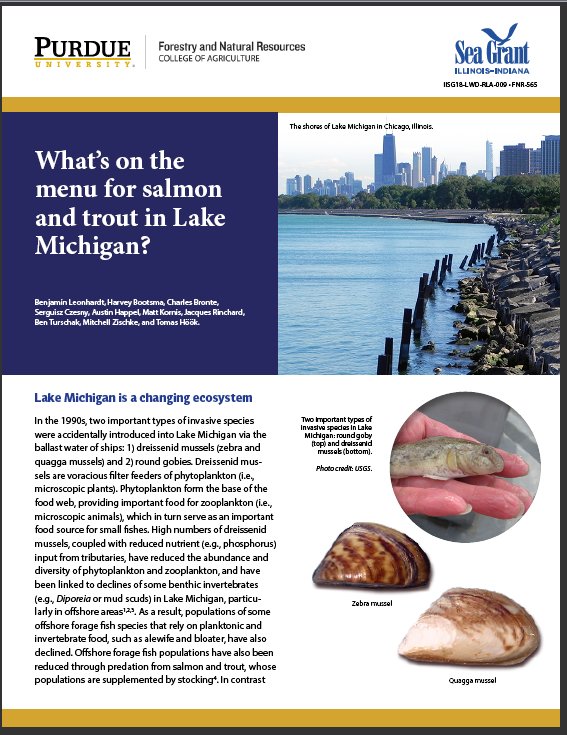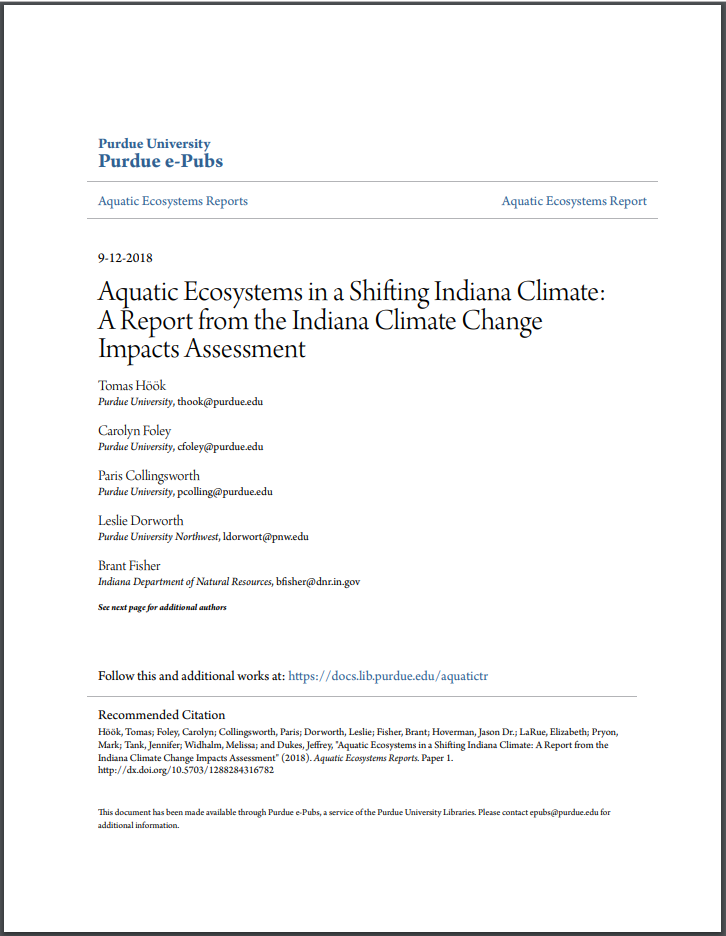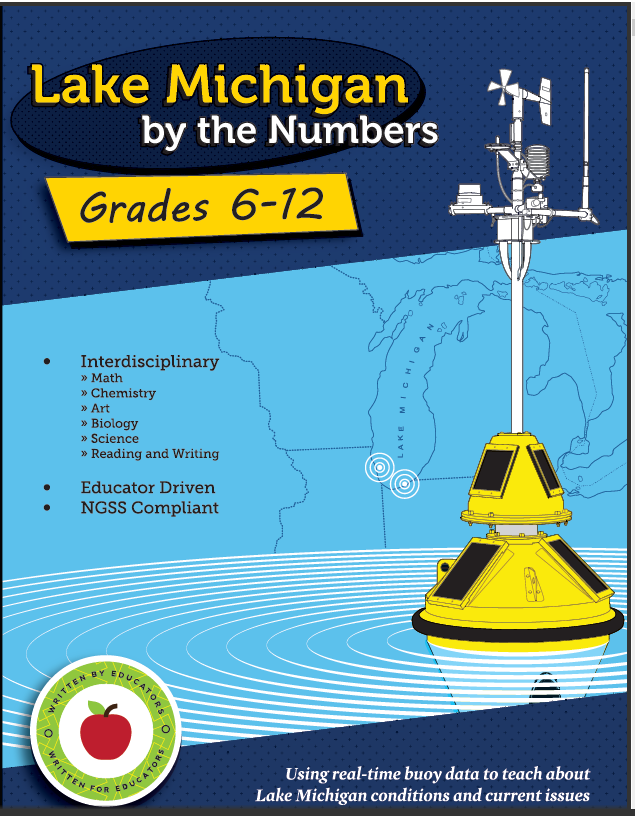Results

Year: 2019
Ecological complexity may improve ecosystem function, stability and adaptability to natural and anthropogenic disturbances. Intraspecific trophic variation can represent a significant component of total community variation and can influence food web structure and function. Thus, understanding how trophic niches are partitioned between intraspecific and interspecific processes could improve our understanding of food web dynamics.
We examined gut contents, fatty acids and stable isotope ratios in round goby (Neogobius melanostomus) and yellow perch (Perca flavescens) across six sites in Lake Michigan, USA, to determine patterns in intra‐ and interspecific trophic composition (i.e., mean gut or fatty acid composition) and diversity (i.e., the diversity of gut items or fatty acids). We also examined relationships between fatty acid diversity and gut content characteristics to understand potential mechanisms shaping individual trophic phenotypes. There was significant variation in both trophic composition and diversity among sites, and individual and spatial variation was as important to total trophic variation as species identity. Round goby that consumed dreissenid mussels had more diverse fatty acid profiles than those that consumed other benthic invertebrates, whereas yellow perch fatty acid diversity was not related to gut content composition. Our results confirm that intraspecific variation in resource use can be as important to trophic dynamics as interspecific variation, and that spatial variation in lower level food web processes or habitat may strongly structure local food web dynamics. Individual‐level examination of trophic diversity, in concert with trophic composition, could provide additional information about the resilience, function and adaptability of local food webs.
Document available through publisher’s website: 10.1111/eff.12472
Year: 2018
This extension publication intends to educate audiences on Lake Michigan ecosystem changes and their effect on target species such as salmon and trout. This may provide audiences with a better understanding on key management strategies (e.g., decreases in salmon stocking rates) used by state fisheries agencies. Additionally, an increased understanding of what salmon and trout are eating in Lake Michigan may help anglers better target these species, which may increase catch rates and overall enjoyment of fishing.
This document is available through the Purdue University Extension Education Store at https://edustore.purdue.edu/FNR-565-W.html
Year: 2018
Indiana’s ecosystems will experience changes in water quantity, water temperature, ice cover, water clarity, and oxygen content as the state’s temperature and rainfall patterns shift. The plants and animals living in these aquatic ecosystems will undergo changes that will vary based on the species and the specific places they inhabit.
Part of the Indiana Climate Change Impacts Assessment (IN CCIA).
Download the report from Purdue e-Pubs. DOI: 10.5703/1288284316782
File Type: pdf
File Size: 14.00 MB
Year: 2015
A curriculum for integrating real-time buoy data as a teaching tool about Lake Michigan conditions and current issues.
Download File
Year: 2014
Angler Archive provides easy access to long-term recreational fishing data collected in southern Lake Michigan. These data have been provided by the Illinois Natural History Survey (INHS) and Indiana Department of Natural Resources (IDNR). The Angler Archive allows you to explore trends in three recreational fisheries from the mid 1980s, filter and compare data by factors such as month, site, and target species, visualize the data in a number of different ways, and export charts and data table.
For more detailed information, visit Angler Archive
Page 1 of 1
Note: Some older Illinois-Indiana Sea Grant publications have not yet been restructured into ADA compliant formats. We are actively working on this. If you are having difficulty accessing a particular item in one of our databases, please contact iisg@purdue.edu with the name of the item and its URL for further assistance.





